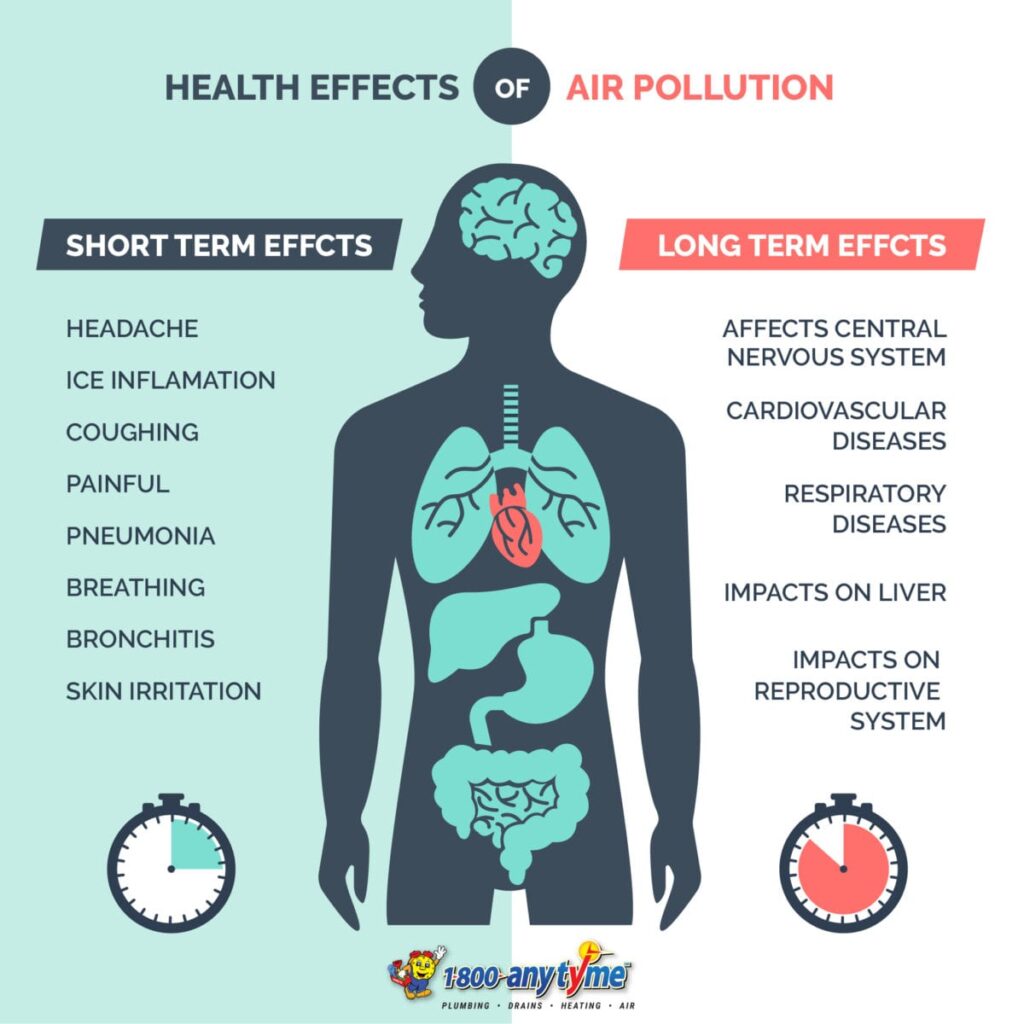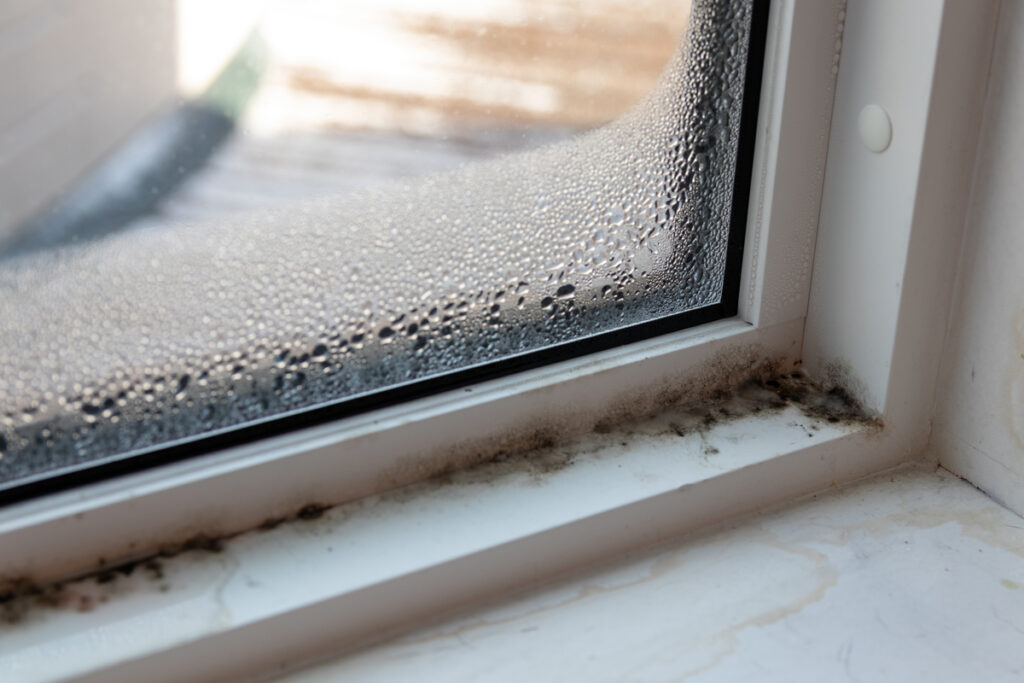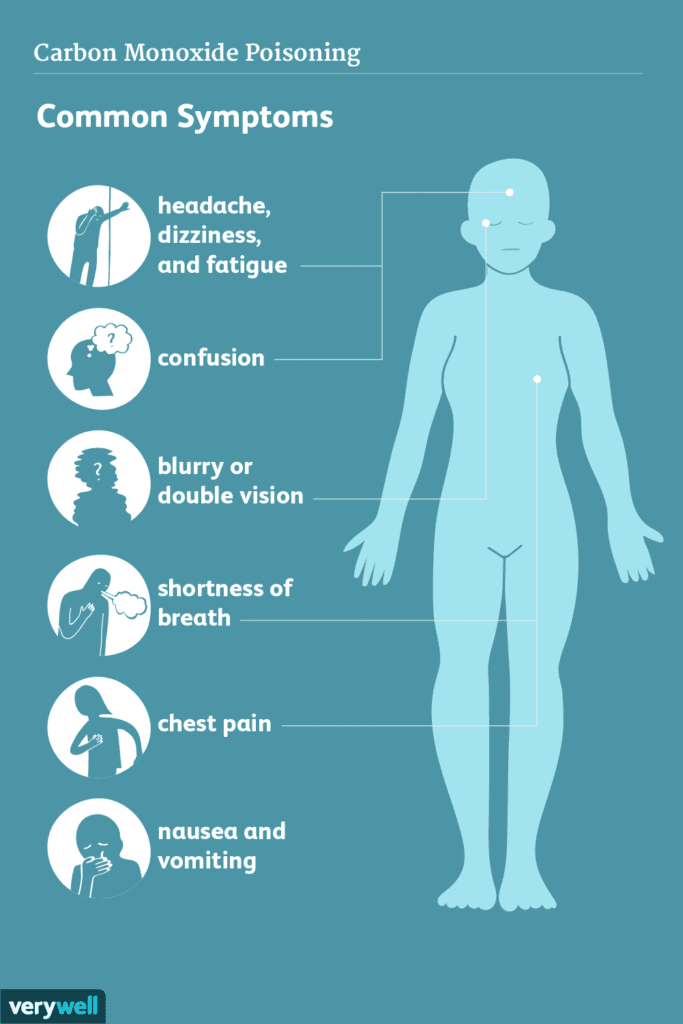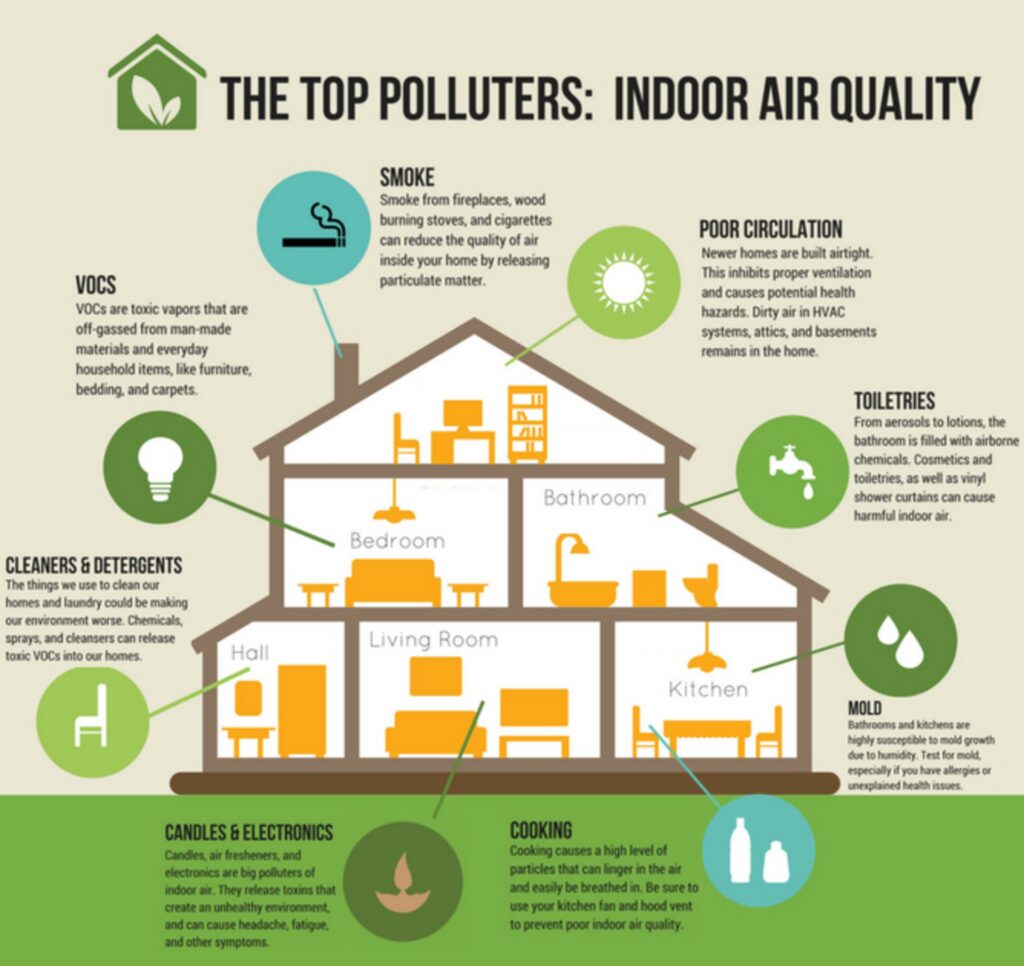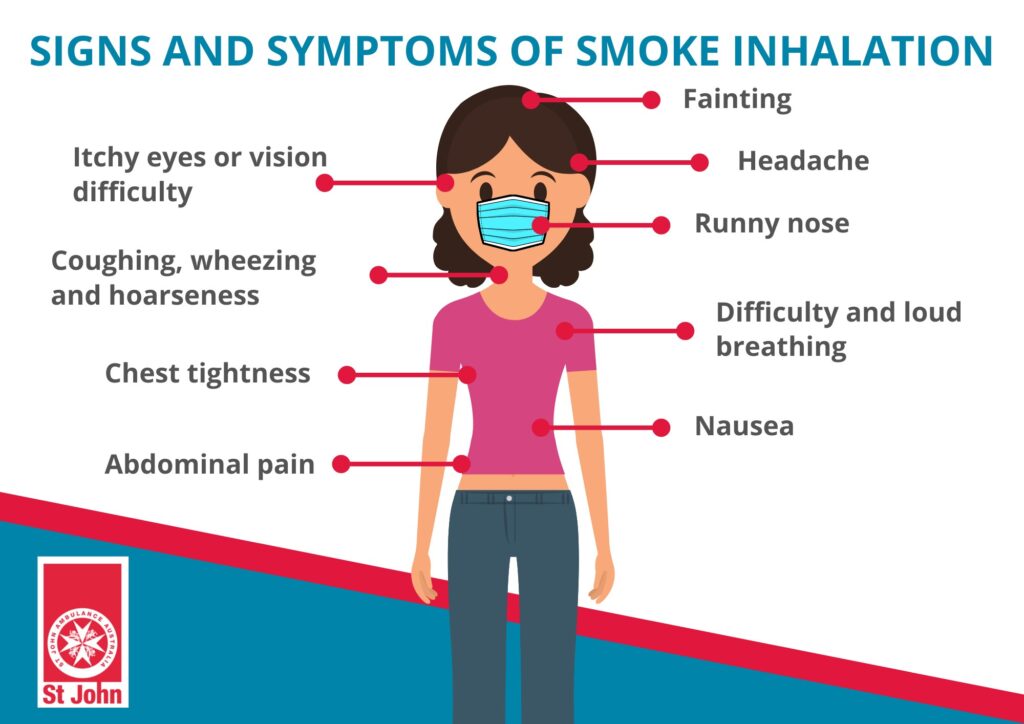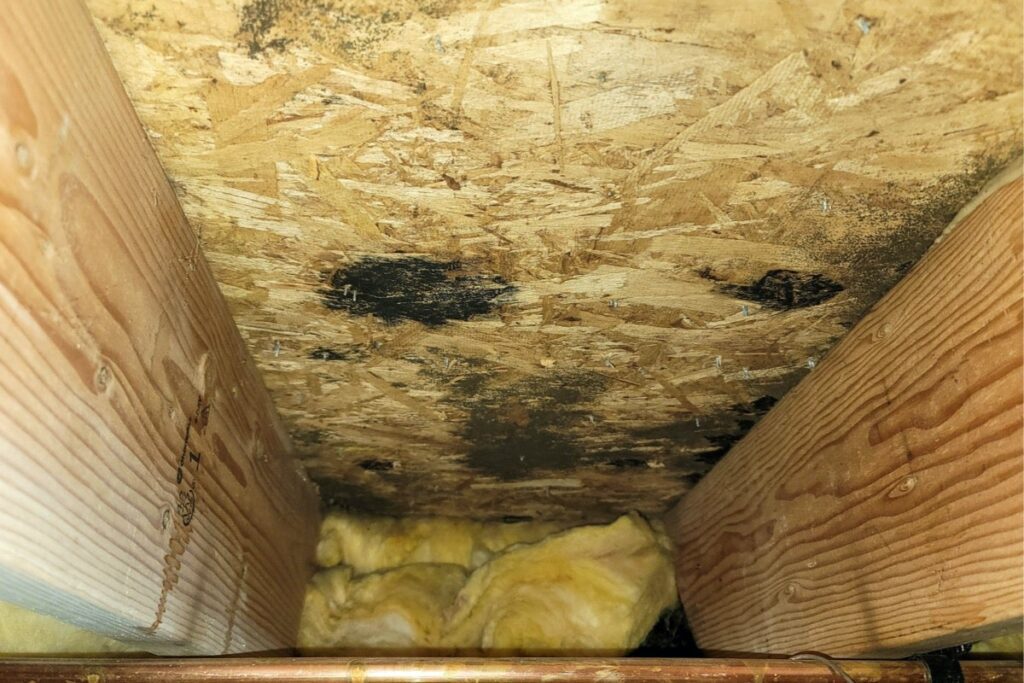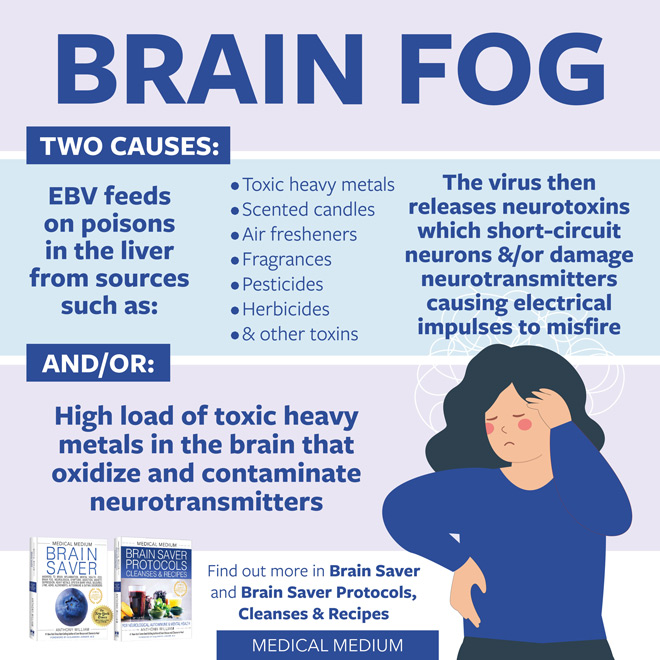Did you know that the air quality inside your home or office can have a significant impact on your health and well-being? In this article, we will explore the potential side effects of bad indoor air quality and how it can affect you. Whether it’s allergies, respiratory issues, or a weakened immune system, understanding the consequences of poor air quality is essential for creating a healthier living environment. Discover how to identify and combat these side effects, and take a step towards breathing cleaner, fresher air.
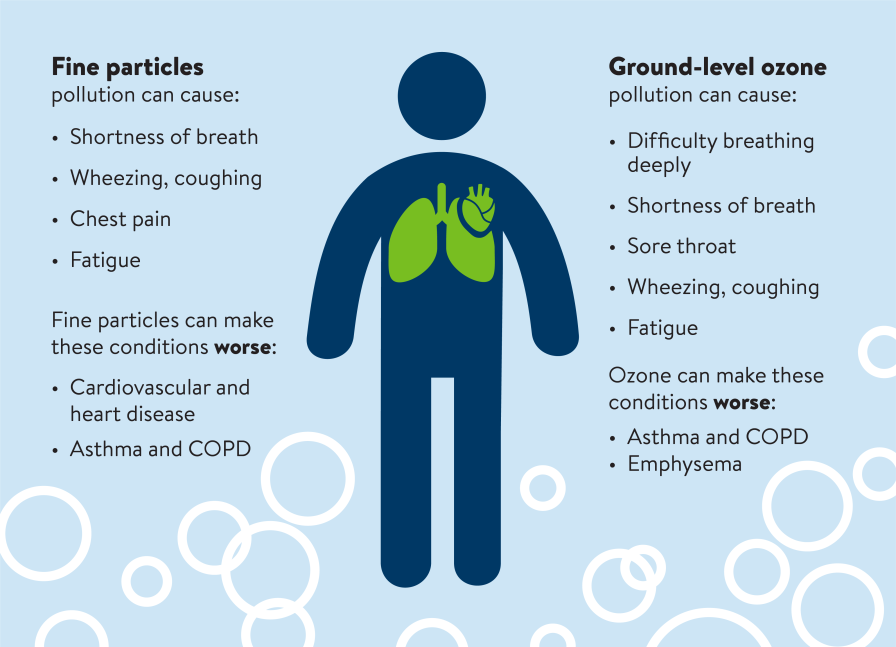

Respiratory Issues
Indoor air pollution can significantly impact your respiratory health and lead to a range of issues. One common respiratory problem is asthma, which causes inflammation and narrowing of the airways, making it difficult for you to breathe. If you already have asthma, poor indoor air quality can trigger or worsen your symptoms, leading to more frequent attacks and increased reliance on medication.
Allergies are another respiratory issue that can be aggravated by bad indoor air quality. Irritants such as dust mites, pollen, pet dander, and mold can trigger allergic reactions, causing symptoms like sneezing, itching, congestion, and wheezing. For individuals with pre-existing allergies, being exposed to these irritants indoors can make their symptoms more severe and persistent.
Chronic bronchitis is a respiratory condition characterized by inflammation and irritation of the bronchial tubes. Poor indoor air quality, especially from tobacco smoke or pollutants emitted by burning fuels, can increase the risk of developing chronic bronchitis or exacerbate existing symptoms. It can lead to persistent coughing, excessive mucous production, shortness of breath, and decreased lung function.
Sinus infections, also known as sinusitis, can occur when the lining of the sinuses gets inflamed or infected. Bad indoor air quality can contribute to sinus infections by exposing you to allergens, irritants, and pollutants that can irritate the nasal passages and sinuses. This can lead to symptoms such as facial pain, pressure, nasal congestion, and a persistent cough.
Cardiovascular Problems
The impact of bad indoor air quality extends beyond respiratory issues and can also affect your cardiovascular health. High blood pressure, also known as hypertension, is a common cardiovascular problem that can be exacerbated by poor indoor air quality. Exposure to air pollutants like fine particulate matter (PM2.5) and volatile organic compounds (VOCs) can constrict blood vessels, increase inflammation, and raise blood pressure levels, increasing the risk of heart disease and stroke.
Heart disease, including conditions like coronary artery disease, can be worsened by inhaling indoor air pollutants. Fine particulate matter and chemical pollutants can enter your bloodstream through your lungs, promoting inflammation and oxidative stress that can damage blood vessels and increase the risk of heart attacks and other cardiovascular events.
Stroke, which occurs when the blood supply to the brain is interrupted, can also be linked to bad indoor air quality. The same pollutants that contribute to high blood pressure and heart disease can increase the risk of stroke by promoting the formation of blood clots and damaging blood vessels, leading to restricted blood flow to the brain.
Heart attacks, or myocardial infarctions, can be triggered by exposure to poor indoor air quality as well. The combination of elevated blood pressure, inflammation, and arterial damage can create the perfect conditions for a heart attack to occur. Individuals with pre-existing heart conditions or risk factors should pay particular attention to the quality of the air they breathe indoors.


Cognitive Impairment
Breathing in polluted indoor air can also have negative effects on your cognitive function and mental well-being. Difficulty concentrating is a common cognitive impairment associated with bad indoor air quality. Exposure to pollutants like volatile organic compounds and ozone can affect brain function, leading to reduced focus, attention, and productivity.
Memory problems can also arise from exposure to indoor air pollutants. Pollutants such as mold, formaldehyde, and volatile organic compounds can have neurotoxic effects, impacting memory and cognitive abilities. Inhaling these pollutants can lead to forgetfulness, difficulty retaining new information, and impaired overall cognitive function.
Furthermore, reduced cognitive function is a potential side effect of bad indoor air quality. Studies have shown that long-term exposure to pollutants in indoor environments is associated with lower performance in cognitive tests and decreased cognitive abilities in areas such as verbal comprehension, arithmetic, and processing speed. Pregnant women, children, and older adults may be more susceptible to the cognitive effects of poor indoor air quality.
Skin Irritations
Your skin can also suffer from the consequences of bad indoor air quality. Dryness is a common skin irritation that can be caused by indoor air pollutants like low humidity levels, excessive use of heating or cooling systems, and exposure to certain chemicals. When the air lacks moisture, it can lead to dry, flaky skin, itching, and discomfort.
Itchiness is another skin problem that can be triggered or worsened by poor indoor air quality. Exposure to irritants such as dust mites, mold spores, and certain chemicals can make your skin sensitive and prone to itching. Scratching the affected areas can further irritate the skin and potentially lead to rashes or infections.
Rashes can occur as a direct result of exposure to certain indoor air pollutants or due to the body’s reaction to allergens and irritants in the air. Skin rashes can present as red, itchy patches, bumps, or blisters and may be localized or spread over larger areas of the body. Common culprits include pet dander, dust mites, mold spores, and certain chemicals found in cleaning products or personal care items.


Eye and Throat Irritations
Your eyes and throat can also be affected by bad indoor air quality, causing discomfort and irritation. Watery or irritated eyes are a common symptom of exposure to irritants and allergens in the air, such as dust, pet dander, pollen, and mold spores. These substances can cause your eyes to become red, itchy, and watery, making it difficult to focus and causing discomfort.
Sore throat is another side effect of breathing in polluted indoor air. Irritants like smoke, chemical pollutants, and volatile organic compounds can irritate the mucous membranes of your throat, leading to a persistent soreness or scratchy feeling. This can be accompanied by coughing, hoarseness, and discomfort when swallowing.
Hoarseness, or changes in your voice quality, can also be attributed to bad indoor air quality. The same irritants that cause sore throat can also affect your vocal cords, leading to hoarseness or even temporary voice loss. If you frequently experience hoarseness or voice changes indoors, it may be worth investigating the air quality in your environment.
Fatigue and Headaches
Feeling constantly tired and experiencing frequent headaches can be symptoms of exposure to bad indoor air quality. Constant tiredness can be attributed to a variety of factors related to poor indoor air quality, including insufficient ventilation, high levels of carbon dioxide, and the presence of specific pollutants. The combination of these factors can lead to a lack of oxygen and increased fatigue.
Frequent headaches are another common side effect of breathing in polluted indoor air. A variety of factors can contribute to indoor air quality-related headaches, including allergens, pollutants, volatile organic compounds, and carbon monoxide. These substances can trigger headaches by causing inflammation, dilating blood vessels, or interfering with normal neurotransmitter function in the brain.
Understanding the role of indoor air quality in fatigue and headaches is crucial for maintaining your overall well-being. By ensuring good ventilation, reducing exposure to pollutants, and addressing any specific triggers, you can minimize the impact of bad indoor air quality on your energy levels and headache frequency.


Weakened Immune System
Exposure to poor indoor air quality can weaken your immune system, making you more susceptible to infections and impairing your body’s ability to fight off illnesses. Indoor air pollutants can irritate and inflame the respiratory system, compromising the natural defense mechanisms of your immune system. This can lead to a higher likelihood of catching common colds, flu viruses, and other respiratory infections.
In addition, bad indoor air quality can delay the healing process when you do get sick or injured. Pollutants in the air can cause additional stress on your immune system, diverting its resources away from healing the body. As a result, wounds may take longer to heal, leaving you vulnerable to infections and increasing the risk of complications.
Maintaining good indoor air quality through proper ventilation, regular cleaning, and minimizing the use of chemical-based cleaning products can help strengthen your immune system and reduce the chances of falling ill or experiencing delays in healing.
Sick Building Syndrome
Sick Building Syndrome (SBS) is a term used to describe a condition where individuals experience a variety of symptoms while spending time in a specific building or indoor environment. The symptoms associated with SBS can include respiratory issues, headaches, irritated skin, and fatigue. These symptoms usually improve once the affected individual leaves the building or is exposed to fresh air.
Respiratory symptoms such as coughing, wheezing, throat irritation, and shortness of breath are commonly reported in individuals affected by SBS. The indoor air quality in the building, including inadequate ventilation, the presence of allergens or irritants, or the accumulation of pollutants, can contribute to the development of these respiratory symptoms.
Headaches can also be a prominent feature of Sick Building Syndrome. The exact cause of SBS-related headaches is not fully understood, but it is believed that factors such as poor indoor air quality, elevated levels of carbon dioxide, and exposure to toxins or chemicals can trigger or worsen headache symptoms. Migraine-like headaches, tension headaches, and sinus headaches are among the types commonly reported.
Irritated skin is another symptom associated with Sick Building Syndrome. The presence of allergens, pollutants, or chemicals in the indoor environment can cause skin dryness, itching, redness, and rashes. Direct contact with certain surfaces or materials within the building, such as carpets, upholstery, or cleaning products, can also contribute to skin irritation.
Fatigue is often experienced by individuals affected by Sick Building Syndrome. The combination of poor indoor air quality, low ventilation, exposure to pollutants, and the body’s increased effort to combat the adverse conditions can lead to feelings of fatigue, lethargy, and a lack of energy. This can greatly impact an individual’s overall well-being and productivity.
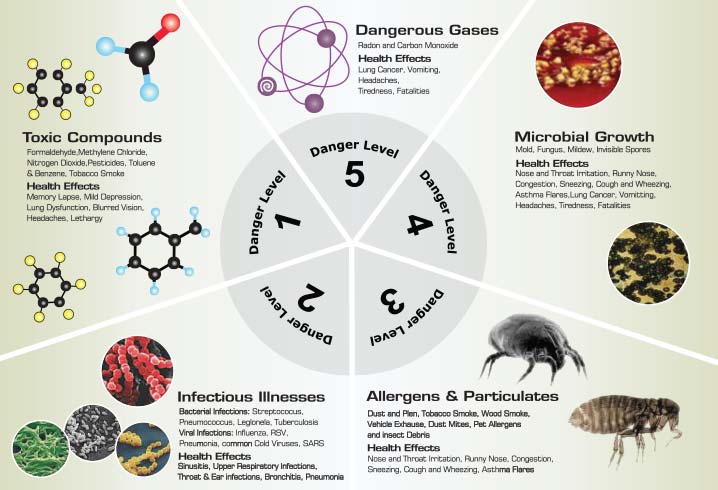

Aggravation of Existing Conditions
For individuals already living with certain health conditions, exposure to bad indoor air quality can aggravate their symptoms and potentially worsen their overall well-being. Individuals with asthma, for example, may experience more frequent and severe asthma attacks when exposed to indoor air pollutants such as smoke, dust mites, pet dander, or mold spores. Proper ventilation and reduction of allergens and irritants in the indoor environment are crucial to managing their condition.
Similarly, individuals with allergies, whether seasonal or perennial, can find their symptoms amplified in indoor spaces with poor air quality. Common allergens like dust, pollen, mold spores, and pet dander can become trapped indoors, leading to persistent sneezing, itching, congestion, and difficulty breathing. Minimizing exposure to these allergens through regular cleaning and the use of air purifiers can help alleviate their symptoms.
Other chronic illnesses, such as chronic obstructive pulmonary disease (COPD) or immune system disorders, can be negatively affected by poor indoor air quality. Individuals with these conditions may experience worsened respiratory symptoms, increased susceptibility to infections, and a higher risk of complications. Collaborating with healthcare professionals to manage symptoms, avoid triggers, and improve indoor air quality is essential for maintaining their well-being.
Developmental and Growth Issues
Children, in particular, can be vulnerable to the side effects of bad indoor air quality, which can potentially disrupt their development and growth. Lung function abnormalities in children have been linked to exposure to indoor air pollutants, including tobacco smoke, cooking fumes, mold spores, and dust particles. Prolonged exposure to these pollutants can lead to reduced lung function, impaired respiratory health, and increased risk of developing respiratory conditions later in life.
Similarly, delayed cognitive development in children has been associated with poor indoor air quality. Various indoor air pollutants, such as volatile organic compounds, formaldehyde, and lead, can have neurotoxic effects on a child’s developing brain. Studies have suggested that exposure to these pollutants during critical periods of brain development can lead to long-term cognitive impairments, including learning difficulties, attention deficits, and lower IQ scores.
Creating a safe and healthy indoor environment for children is crucial to their overall well-being and development. This includes implementing proper ventilation, reducing exposure to potential indoor air pollutants, maintaining cleanliness, and using child-friendly cleaning products.
In conclusion, the side effects of bad indoor air quality can impact various aspects of your health. From respiratory issues like asthma and allergies to cardiovascular problems such as high blood pressure and heart disease, the consequences of poor indoor air quality are wide-ranging. Cognitive impairments, skin irritations, eye and throat irritations, fatigue, weakened immune system, aggravation of existing conditions, sick building syndrome, and developmental and growth issues are also prominent concerns. By recognizing the importance of indoor air quality and taking steps to improve it, such as proper ventilation, regular cleaning, and minimizing exposure to pollutants, you can create a healthier and more comfortable indoor environment for yourself and your loved ones.

